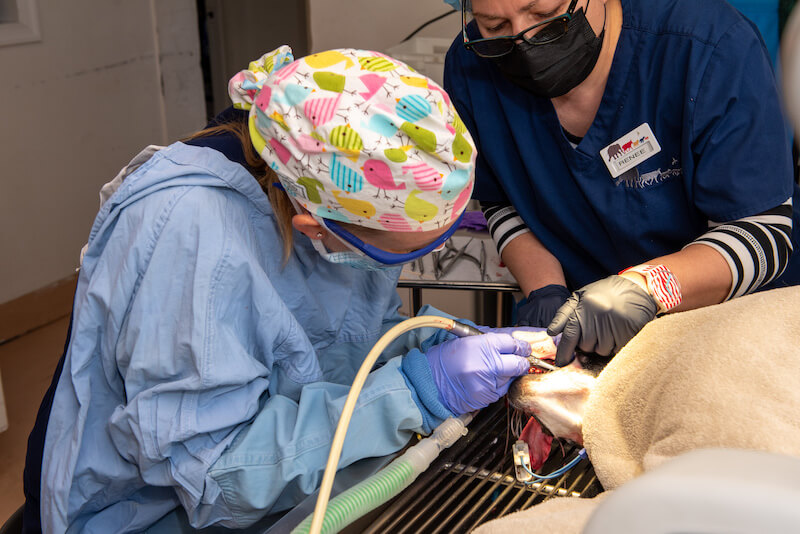 Most pet owners are not aware that their pet has an oral problem so an examination of the oral cavity should form part of every physical examination. Oral examination in a conscious animal can only give limited information and a definitive oral examination can only be performed under general anesthesia.
Most pet owners are not aware that their pet has an oral problem so an examination of the oral cavity should form part of every physical examination. Oral examination in a conscious animal can only give limited information and a definitive oral examination can only be performed under general anesthesia.
Pain originating from dental problems are very rarely recognized by owners or professionals. Rarely will an animal become anorexic due to a dental problem. The exception to this is in the case of severe soft tissue injury, for example chronic gingivostomatitis. In general dental pain is a chronic pain, and it is only after treatment that an owner reports how much better their pet is doing. Pain is often mistaken for a pet just getting old. Very few clients examine their pets’ teeth unless they are carrying out daily home care, so actual dental problems often go unnoticed.
It is important to recognize symptoms that may have a link to dental diseases such as a nasal discharge or external facial swellings. In some cases, dental patients may even present with what appear to be neurological symptoms.
The main signs of oral disease include:
• Halitosis
• Broken or discolored teeth
• Changes in eating behavior- Chewing on one side of the mouth, preferring softer diets
• Rubbing or pawing at the face
• Bleeding from the mouth
• Inability or unwillingness to open or close the mouth
• Change in temperament
• Morbidity
• Weight loss
